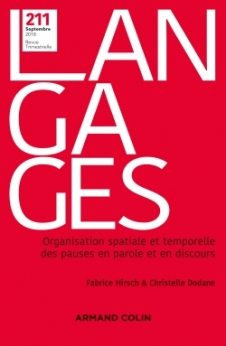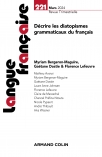
Langages n° 211 (3/2018)
Pour acheter ce numéro, contactez-nous
Recevez les numéros de l'année en cours et accédez à l'intégralité des articles en ligne.
Pour mieux comprendre le rôle de la pause dans l’émergence de la syntaxe dans l’acquisition du français, nous avons analysé les premières combinaisons de deux mots dans une étude longitudinale de deux enfants monolingues français, filmés, entre 15 et 25 mois, en interaction avec leurs parents. Les résultats montrent que le critère de la pause est très important dans la construction de la première syntaxe mais qu’il doit être étudié en association avec d’autres indices prosodiques tels que l’allongement de la dernière syllabe de chaque mot et le contour d’intonation. En l’absence de mots grammaticaux, ce sont ces différents indices qui contribuent à rapprocher et renforcer la cohésion sémantique au sein de l’énoncé. Les données confirment l’existence d’une période de transition consistant à produire des SSWUs (Successive Single-Word Utterances) avant de produire une majorité d’énoncés typiques de deux mots.
In order to better understand the role of the pause in the emergence of syntax in the acquisition of French, we analyzed the first two-word combinations in a longitudinal study gathering the productions of two French monolingual children, recorded between 15 and 25 months in interaction with their parents. Findings point out that the criterion of pause is very important in the construction of the first syntax, but that it must be studied relatively to other prosodic cues, such as the lengthening of the last syllable of each word and the nature of the pitch. In the lack of grammatical words, which are characteristic of the first word associations, these different parameters contribute to bring closer and reinforce the semantic cohesion within the utterance. Moreover, the data confirm the existence of a transition period of producing SSWUs (Successive Single-Word Utterances) before realization of a majority of typical two-word utterances.

